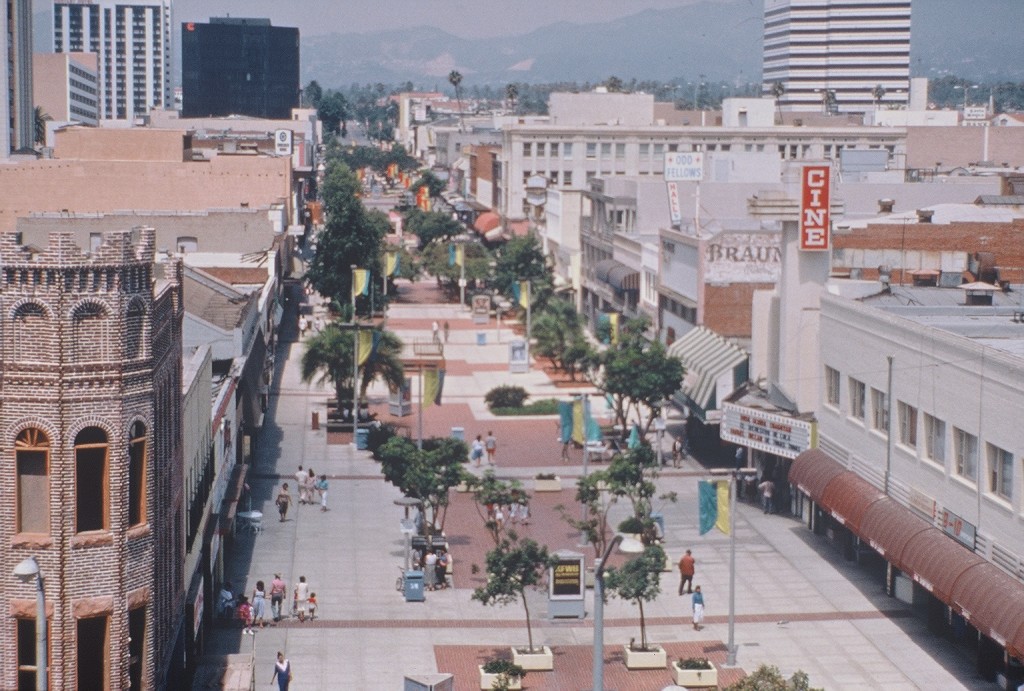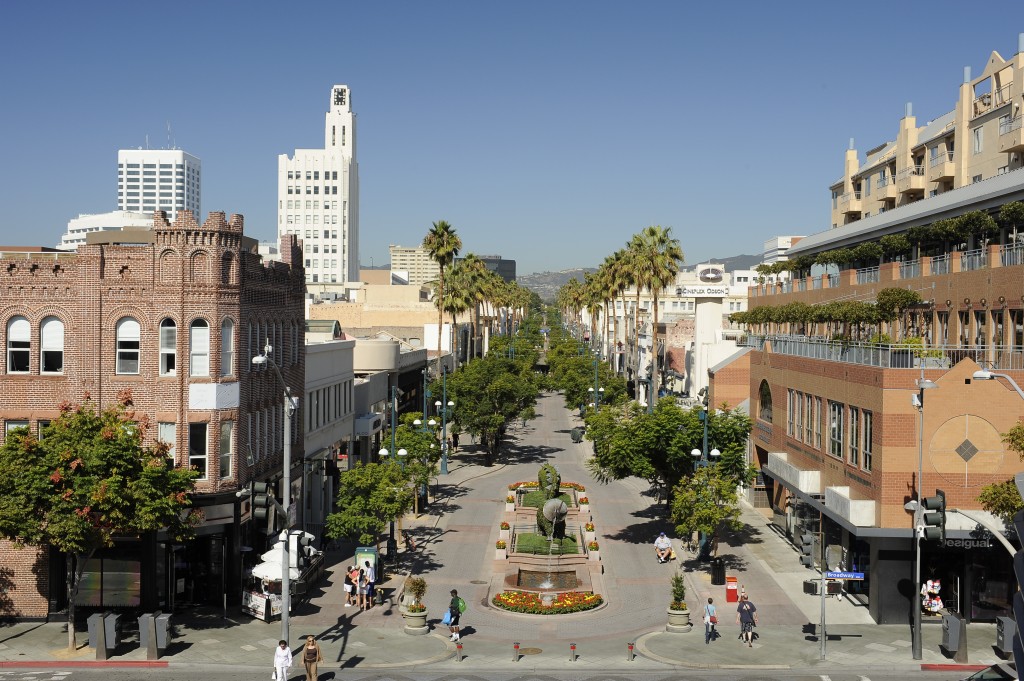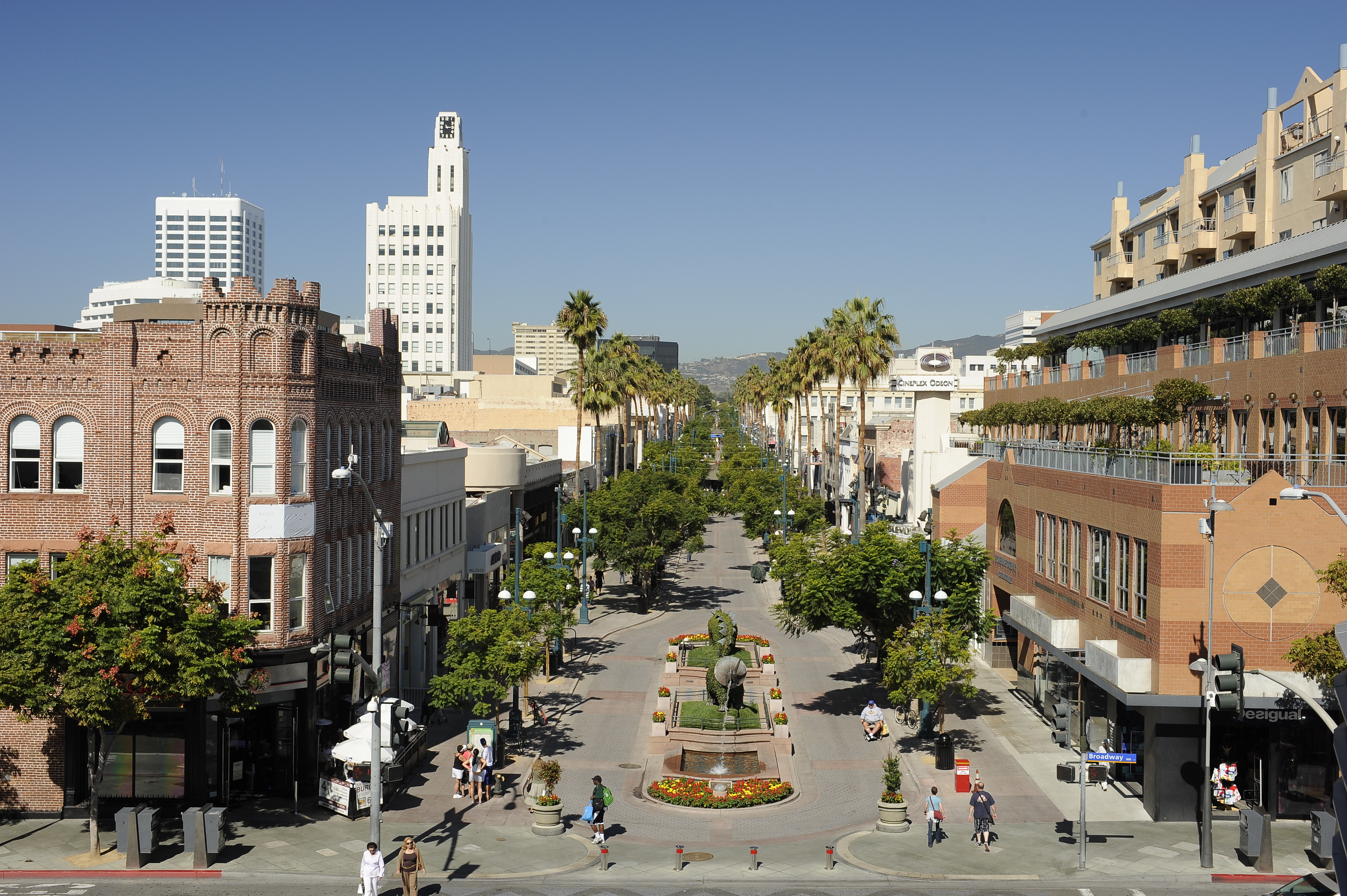
Visiting the Third Street Promenade on any given day – let alone on a holiday weekend – it’s hard to imagine the three block stretch between Wilshire Boulevard and Broadway in Downtown Santa Monica was ever anything but a bustling commercial district.
Today, 25 years after it first opened, musicians (of a wide range of talents), dancers and even psychic cats make camp every few hundred feet in hopes of capturing an audience from the hundreds of passers-by as they meander between the restaurants and store-fronts, perusing all that the Promenade has to offer.
It’s a place where locals are just as likely to overhear conversations in a half-dozen languages as they are to bump into a neighbor. The Promenade generates hundreds of millions of dollars – in 2012, it made more than $435 million for the City – in taxes every year.
To celebrate 25 years of success, there will be much fanfare in the coming months, including weekly picnics every Friday from noon to 3 p.m., weekly movie nights in July and August, and a yet-to-be-announced grand celebration in September.
But 30 years ago, that stretch – then known as the Third Street Mall – was anything but the vibrant, world-famous destination that it is today. In fact, despite its prime location only a few minutes walk from the beach, Santa Monica’s living room – as it is now often called – was desolate.
“It’s really important to understand how the Third Street Promenade itself was a turning point for the community,” Kathleen Rawson told a handful of community leaders and reporters gathered on the third floor of the Santa Monica Place Thursday.
“Everything that has happened out here has really exceeded expectations,” she said.
Rawson now heads Downtown Santa Monica, Inc., the nonprofit that manages the maintenance and marketing for the thriving mixed-use district. But, when she first moved to California in the mid 1980s, she was director of sales for the Holiday Inn – now the Wyndham – hotel by the Pier.

Back then, she said, getting people to visit the city by the sea was much more difficult.
“Santa Monica in 1988 was a very different place,” she told the crowd. Third Street didn’t draw anywhere near the crowds it does today and the Pier was often empty.
“There wasn’t a critical mass of people there,” she said. “It was a little concerning to be down there, especially after dark.”
The Third Street Mall, which, like its successor, only allowed pedestrians, had been limping along since Santa Monica Place opened in the early 1980s, siphoning off businesses and the vital foot traffic that goes with them.
“The City had largely given up on the [Third Street] Mall,” Denny Zane told the crowd Thursday.
In the early 1980s, Zane was elected to the City Council as part of the ascendant renters’ rights majority and one of the tasks that faced them was how to revitalize the city’s downtown.
“The big missing ingredient was that [these malls] were strategies to revitalize without creating the right mix of uses to attract people,” Zane said of the original Third Street Mall, one of about 35 such projects undertaken by U.S. cities in the late 1970s and early 1980s.
Thus began a long and involved planning process, which operated out of a store front on the Third Street Mall where residents, merchants and planners met regularly to plan the future of the area.
“It was a very interactive, hands-on process,” said Woodie Tescher, who headed the consultant team in the planning process.
He described stakeholders placing ribbon, parsley and Fruit Loops on a map of the area drawn on butcher paper to indicate where they wanted to see certain uses on the future Promenade.
The merchants, Zane said, thought the new Promenade needed to allow cars through since they believed that was the main reason the Mall had failed. But residents, he said, wanted to make sure that the pedestrian-only environment stayed the same.
In the end, there was a compromise struck that would allow car traffic through in the evening but not during the day. Every block of the Promenade has bollards that can be lowered to allow vehicles through. However, the cars never came in large part to how quickly the Promenade became a success.
Zoning for outdoor dining, a novel idea at the time, Zane said, state-of-the-art movie theaters, a wide-range of shopping options, housing above the shops along Third Street and programming community events like the weekly Farmers Market on Arizona, meant that there was something to do for nearly everybody at almost all times of the day.
“That was a way of saying, ‘Our mission is to convene the community here,’” Zane said of the Farmers Market.
Community leaders also made sure that businesses understood the new Promenade was going to be the place to be.

“What made this different was that there was a concurrent process, while the planning was in progress, to actually have someone out on the street, knocking on doors, trying to recruit businesses to come to this location,” Tescher said.
There is no sign that the Promenade’s success will slow down any time soon.
In early 2016, the Expo light rail begin operating from Downtown Los Angeles to Colorado Avenue and Fifth Street in Santa Monica, bringing with it an estimated 40,000 daily riders.
With the city’s brand-new Tongva Park to the south, the Pier to the west and the Promenade to the north, visitors disembarking the train at Fifth and Colorado will arrive in the center of a thriving Downtown district.
“When Expo comes in, the Big Blue Bus is doing an analysis of their entire system,” said Rawson, adding that there are plans to add a circulator that would help bring visitors from the new station to other parts of the Downtown, like the north end of the Promenade.
Two new ArcLight movie theaters – one in the Santa Monica Place and another proposed for Fourth Street between Arizona and Santa Monica – will also draw people from the Expo station toward the north of the Promenade.
And once the pending mixed-use project by Pritzker Prize-winning architect Rem Koolhaas for the City-owned 2.5 acre site at Fourth Street and Arizona finishes, Zane said, the whole area will experience a renaissance.
“The new project on the City property at Fourth and Arizona, I think, will be a major generator of new pedestrian activity on that end, create pedestrian life on Fourth and Fifth Street, and help to activate both the north part of the Downtown, but also the more easterly part of the Downtown,” he said.







